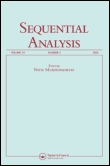
Sequential Analysis-Design Methods and Applications
Scope & Guideline
Pioneering methodologies for informed decision-making in statistics.
Introduction
Aims and Scopes
- Sequential Change Detection:
Research on methodologies for detecting changes in data streams or processes over time, including applications in fields like epidemiology, finance, and quality control. - Bayesian and Non-Bayesian Inference:
Exploration of both Bayesian and frequentist approaches to inference in sequential settings, addressing issues like parameter estimation, hypothesis testing, and model comparisons. - Optimal Design of Experiments:
Focus on the design of experiments that utilize sequential sampling methods to improve efficiency and effectiveness in data collection, particularly in clinical trials and industrial applications. - Statistical Process Control:
Application of sequential methods to monitor and control processes, ensuring quality and consistency in manufacturing and service industries. - Robust Statistical Methods:
Development of methods that maintain performance under model deviations and uncertainties, crucial for real-world applications where data may not meet ideal conditions. - Multivariate and High-Dimensional Data Analysis:
Addressing challenges associated with analyzing complex, high-dimensional datasets using sequential methodologies, particularly relevant in modern data-rich environments.
Trending and Emerging
- Adaptive Sampling and Response Designs:
The rise of adaptive designs in clinical trials and other experimental settings reflects a growing interest in methodologies that adjust based on incoming data, leading to more efficient use of resources. - Real-Time Data Monitoring:
Increasing focus on real-time monitoring techniques that leverage sequential analysis for immediate decision-making, particularly in public health and safety applications. - Machine Learning Integration:
The incorporation of machine learning techniques into sequential analysis signifies a trend towards more sophisticated data-driven approaches, enhancing predictive capabilities and decision-making. - Applications in Big Data and High-Dimensional Contexts:
Research addressing the challenges posed by big data, particularly in high-dimensional settings, is gaining momentum as the need for robust sequential methods in these areas becomes more critical. - Nonparametric Methods and Robustness:
Growing interest in nonparametric approaches and robust techniques that do not rely heavily on parametric assumptions, making them suitable for a wider range of applications in uncertain environments.
Declining or Waning
- Traditional Frequentist Methods:
Although foundational, traditional frequentist approaches are increasingly overshadowed by Bayesian methods and adaptive designs, which offer more flexibility and efficiency in sequential analysis. - Non-Sequential Approaches to Estimation:
Research focusing on static estimation methods, which do not adapt to incoming data, is declining as the field emphasizes the importance of sequential and adaptive methodologies. - Basic Hypothesis Testing Frameworks:
Simplistic hypothesis testing frameworks without consideration for sequential data collection or adaptive designs are becoming less common, as researchers seek more nuanced approaches. - Single-Stage Experimental Designs:
There is a noted reduction in the publication of studies focusing solely on single-stage designs, as multi-stage and adaptive designs gain traction for their efficiency in research applications.
Similar Journals

Stats, published by MDPI, serves as an invaluable open access platform dedicated to the fields of statistics and probability. Since its inception in 2018, the journal has been committed to disseminating high-quality research and promoting innovation in statistical methodologies through a rigorous peer-review process. Operating from Basel, Switzerland, Stats offers a global reach and aims to foster collaboration among researchers, professionals, and graduate students alike. With an impact factor indicating its emerging significance, the journal resides in the Q4 quartile of the statistics and probability category for 2023 according to Scopus rankings. This positions it within the evolving landscape of statistical research, enhancing its visibility and accessibility. Researchers are encouraged to contribute to this dynamic field and benefit from the journal's dedication to open access publishing, ensuring that research findings can reach a broad audience without barriers.
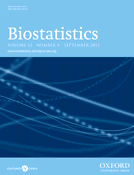
BIOSTATISTICS
Elevating biostatistics to enhance medical research.BIOSTATISTICS is a premier academic journal dedicated to the intersection of statistical methodologies and their applications in the field of biomedicine, published by Oxford University Press. With its ISSN 1465-4644 and E-ISSN 1468-4357, the journal has established itself as a crucial resource for researchers and professionals in the broad disciplines of statistics and probability, particularly within medical contexts. The journal proudly holds a Q1 ranking in multiple categories as of 2023, including Medicine (miscellaneous), Statistics and Probability, as well as Statistics, Probability, and Uncertainty, placing it at the forefront of statistical research. It has also achieved notable Scopus rankings, underscoring its influence and reach—ranking 27th in Mathematics (Statistics and Probability) and 94th in Medicine (General Medicine). Although it does not currently offer open access options, BIOSTATISTICS remains committed to advancing scholarly conversation and innovation in statistical science, making it an essential outlet for both established and emerging researchers. With contributions spanning from 2003 to 2024, this journal is actively seeking to foster an understanding of complex statistical approaches in biomedicine, enabling professionals in the field to apply robust statistical techniques to real-world problems.

Statistics and Its Interface
Exploring the Intersection of Statistics and Applied MathematicsStatistics and Its Interface, issn 1938-7989, published by INT PRESS BOSTON, INC, is a vital academic journal dedicated to bridging the critical intersection of statistics, applied mathematics, and interdisciplinary research. With its inaugural publication in 2011, this journal has continually aimed to provide a platform for innovative statistical methods and their application across various fields, offering valuable insights for researchers and practitioners alike. While the journal currently operates without an open access model, it maintains an essential position within the scholarly community, evidenced by its 2023 rankings in the third quartile for Applied Mathematics and the fourth quartile for Statistics and Probability. Furthermore, it holds a respectable position in Scopus rankings, reflecting its commitment to quality over quantity. By publishing cutting-edge research, Statistics and Its Interface serves as a critical resource for advancing statistical knowledge and cultivating a deeper understanding of its applications in real-world contexts.
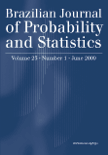
Brazilian Journal of Probability and Statistics
Exploring the Depths of Probability and Its ApplicationsThe Brazilian Journal of Probability and Statistics, published by the Brazilian Statistical Association, stands as a pivotal platform for researchers and practitioners in the realms of probability and statistics. With an ISSN of 0103-0752, this esteemed journal has contributed significantly to the advancement of statistical theory and its applications since its inception. The journal is currently indexed in Scopus, holding a rank of #175 in the Statistics and Probability category and a third quartile (Q3) designation as of 2023, indicating its steady impact within the field. Covering a broad scope of topics, from theoretical advancements to practical applications, it invites submissions that enhance understanding and fosters discussion among academics and professionals alike. The journal is based in São Paulo, Brazil, and operates without open access, ensuring a quality review process that adheres to the highest scholarly standards. Researchers, professionals, and students interested in the latest findings and innovative methodologies in statistics are encouraged to engage with the Brazilian Journal of Probability and Statistics, a vital resource at the intersection of theory and practice.

Communications in Mathematics and Statistics
Transforming Theoretical Concepts into Practical ApplicationsCommunications in Mathematics and Statistics, published by Springer Heidelberg, is a prominent journal dedicated to advancing research in the fields of applied mathematics, computational mathematics, and statistics. With an ISSN of 2194-6701 and an E-ISSN of 2194-671X, the journal has established itself as a vital platform for interdisciplinary scholarly communication since its inception in 2013. The journal falls within the third quartile in various rankings including applied mathematics, computational mathematics, and statistics and probability, indicating its solid position in the global research landscape. With a focus on innovative methodologies and practical applications, Communications in Mathematics and Statistics aims to bridge the gap between theoretical research and practical implementation. Researchers, professionals, and students alike will find valuable insights and cutting-edge studies that contribute to the evolution of mathematical sciences. The journal is based in Germany, with a commitment to fostering international collaboration and accessibility in mathematical research.

STATISTICAL PAPERS
Pioneering Quality Research in StatisticsSTATISTICAL PAPERS, published by Springer, is a leading journal in the field of Statistics and Probability that has been contributing to the academic community since 1988. With an impressive track record spanning over three decades, this journal falls within the prestigious Q2 quartile in both the Statistics and Probability and Statistics, Probability and Uncertainty categories, signifying its high-quality research output. It currently ranks #92 out of 278 in the Mathematics - Statistics and Probability category and #61 out of 168 in Decision Sciences - Statistics, Probability and Uncertainty, placing it in the 67th and 63rd percentiles respectively. Although the journal is not open access, it offers a vital platform for researchers, professionals, and students seeking to disseminate their findings and stay abreast of the latest advancements in statistical methods and applications. With its commitment to the highest standards of scholarship, STATISTICAL PAPERS plays a crucial role in shaping contemporary statistical discourse and fostering innovation within the field.

JIRSS-Journal of the Iranian Statistical Society
Fostering Collaboration for a Stronger Statistical Community.JIRSS - Journal of the Iranian Statistical Society is a prominent academic journal dedicated to the field of statistics and probability, published by the esteemed Iranian Statistical Society. With its ISSN number 1726-4057 and E-ISSN 2538-189X, this journal serves as a vital platform for disseminating cutting-edge research and advancements in statistical methodology and its applications. Established in 2011, JIRSS has consistently contributed to the academic community, achieving a 2023 Scopus rank of #180 out of 278 in its category, placing it within the 35th percentile in the dynamic domain of Mathematics: Statistics and Probability. As an Open Access publication, it enhances accessibility for researchers, professionals, and students, facilitating a wider engagement with innovative statistical techniques and theories. The journal aims to foster collaboration and knowledge exchange among statisticians, ultimately enriching the field and its impact on various scientific disciplines.
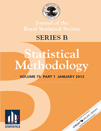
JOURNAL OF THE ROYAL STATISTICAL SOCIETY SERIES B-STATISTICAL METHODOLOGY
Shaping the Future of Statistical ApplicationsJOURNAL OF THE ROYAL STATISTICAL SOCIETY SERIES B-STATISTICAL METHODOLOGY, published by OXFORD UNIVERSITY PRESS, is a leading academic journal dedicated to advancing the field of statistical methodology. With a distinguished Q1 ranking in both Statistics and Probability and Statistics, Probability and Uncertainty as of 2023, this journal stands at the forefront of statistical research, serving as a vital resource for researchers, professionals, and students alike. The journal has been committed to fostering innovative statistical techniques and methodologies since its inception in 1997, covering a wide scope of topics that push the boundaries of statistical applications in various disciplines. Based in the United Kingdom, the journal maintains its reputation through rigorous peer-review practices and high-quality content, making it an indispensable platform for those looking to disseminate their findings and engage with current trends in statistical science. Although the journal does not offer open access, the impact and scholarly significance of its articles remain profoundly influential in shaping contemporary statistical discourse.
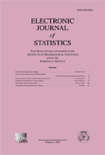
Electronic Journal of Statistics
Transforming Data into KnowledgeElectronic Journal of Statistics, published by INST MATHEMATICAL STATISTICS-IMS, is a premier open-access platform dedicated to the field of statistics and probability, with a remarkable track record since its inception in 2007. With an ISSN of 1935-7524, this journal has quickly established itself as a leading resource within the top Q1 category in both Statistics and Probability, as well as Statistics, Probability and Uncertainty, highlighting its significance and impact in the academic community. The journal’s commitment to disseminating high-quality research allows researchers, professionals, and students to access valuable findings and methodologies that contribute to the advancement of statistical sciences. With its convergence set to continue until 2024, the Electronic Journal of Statistics remains a vital source for scholars looking to enrich their knowledge and engage with cutting-edge statistical theories and applications.
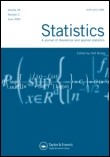
STATISTICS
Nurturing quality research in statistics and probability.STATISTICS is a distinguished journal published by Taylor & Francis Ltd, dedicated to advancing the field of statistical science since its inception in 1985. With a strong focus on both the theoretical and practical aspects of Statistics and Probability, this journal serves as a vital platform for researchers, professionals, and students seeking to disseminate their findings and contribute to critical discussions in the discipline. Although categorized in the Q3 quartile for both Statistics and Probability and Statistics, Probability and Uncertainty, the journal's commitment to quality research is evidenced by its inclusion in relevant Scopus rankings. It holds respectable positions, ranked #132/168 in Decision Sciences and #219/278 in Mathematics. By providing a venue for high-quality research articles and reviews, STATISTICS aims to foster innovation, reinforce methodological advancements, and address contemporary challenges in statistical applications. The journal does not currently offer open access, but it is widely distributed, ensuring that significant research reaches the communities that need it most. Researchers are encouraged to submit their work to this essential resource that continues to shape the landscape of statistical inquiry.